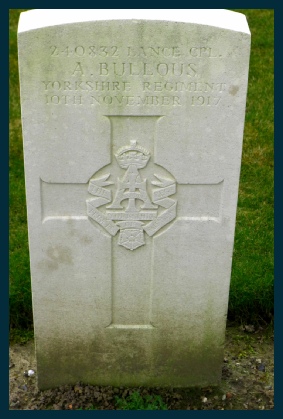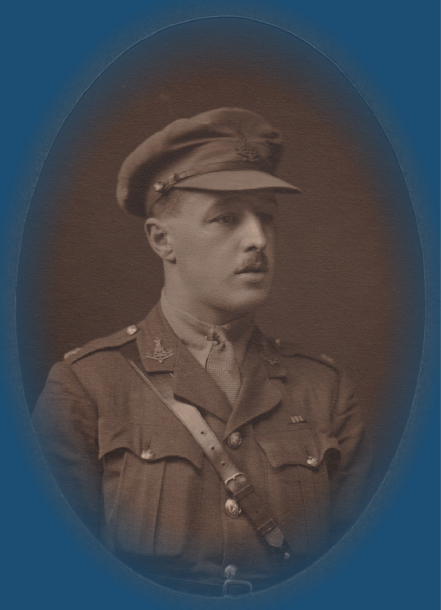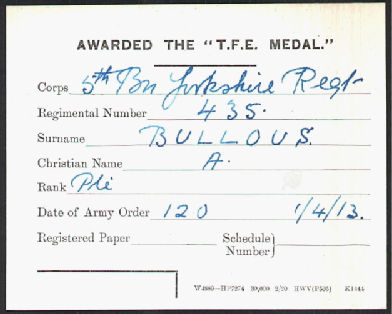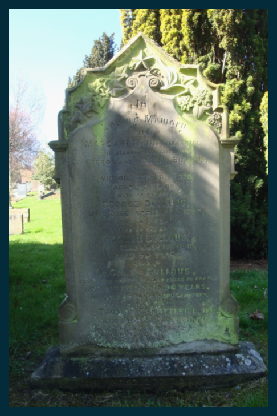Copyright © All rights reserved.



Arthur Bullous


Arthur Bullous was born in the third quarter of 1881 in Malton. He was the fourth son of George and Hannah (nee Clark) Bullous who married in the Malton area in the last quarter of 1867. They had six children, two of whom died in infancy.
In 1891 the Bullous family (George, Hannah and their two sons) were living at the bottom of Church Hill.
1891 census – resident at Church Hill, Malton
BULLOUS, George, Head, Married, M, 56, Tailor, Malton, Yorkshire,
BULLOUS, Hannah, Wife, Married, F, 54, , Malton, Yorkshire,
BULLOUS, Herbert, Son, Single, M, 15, Confectioners Salesman, Malton, Yorkshire,
BULLOUS, Arthur, Son, , M, 9, Scholar, Malton, Yorkshire,
George died in the second quarter of 1897 of heart disease. In 1901 Arthur was working as a cycle mechanic and he and his mother were still at 3 Church Hill along with a boarder.
1901 census -
BULLOUS, Hannah, Head, Widow, F, 63, , Malton, Yorkshire,
BULLOUS, Arthur, Son, Single, M, 19, Cycle Machanic, Malton, Yorkshire,
BOTTERILL, Thomas Gough, Boarder, Single, M, 29, Compositor Printer, Malton, Yorkshire,
The situation remained substantially unchanged in 1911.
1911 census – resident at 3 Church Hill, Malton
BULLOUS, Hannah, Head, Widow, F, 74 , Malton Yorks,
BULLOUS, Arthur, Son, Single, M, 29, Cycle Repairer, Malton Yorks
BOTTERILL, Thomas Gough, Boarder, Single, M, 42, Market Gardener, Malton Yorks
Scenes which will be long remembered by the inhabitants of the town were witnessed in Malton on Wednesday, when the Territorials (“H” Company 5th Battalion Alexandra Princess of Wales’ Own Yorkshire Regiment) marched from the headquarters in Old Maltongate to the railway station. The men quickly responded to the call and were ready on Tuesday night. Many of them were in the streets until a late hour, mingling with the crowds which gathered near the Messenger office and other parts of the town. It was at first understood that they would leave for an unknown destination at 8.30 on Wednesday morning, and the streets presented a busy scene; gradually, however, it became known that they were to leave at 12.30, and long before that time the streets from the headquarters in Old Maltongate to the Railway Station were lined with people who were eagerly discussing the grave crisis.
About half-
It was impossible to admit all the followers into the station but a large number succeeded in in gaining admission, mostly those who had relatives in the ranks. The men were very cheerful, and there was a good deal of hand-
In the brief interval a representative of the “Messenger” held a conversation with Lieutenant Pickles who stated that they were going on to Scarborough to await orders.
At about 10 minutes to one o’clock the train arrived, and after more hand-
The 1/4th and the 1/5th Battalions of the Yorkshire Regiment were both in the 150th Brigade of the 50th [Northumbrian] Division and their activities in the First World War were very similar. Both Battalions went to same areas at the same time and fought in the same Battles -
They were known as the Scarborough or Beverley "Terriers" and originally these two towns, along with neighbouring Driffield, Malton, Pickering, Bridlington, Filey etc provided the Volunteers.
Such were the losses during the War that the personnel of both Battalions changed several times. National conscription was introduced at the beginning of 1917. Bulk transfers were sometimes made from one Battalion to another. The Battalion that was decimated on the Aisne in May 1918 was, therefore, unrecognisable from the one that had embarked for France in April 1915 and had by then lost the biggest part of its purely local attachment.
In 1915 the Battalion became part of 150th Brigade, 50th (Northumbrian) Division. In early April the Division was warned that it would go on overseas service and entrainment began on 16 April, landing at Boulogne. By 23 April the Division had concentrated in the area of Steenvoorde. It had arrived just as the German army had attacked at nearby Ypres, using poison gas for the first time, and was rushed into the battle. The Division then remained in France and Flanders and took part in the Second Battle of Ypres.
In February 1916 the 5th were in trenches in the Ypres Salient until 12th February when they were relieved by 4th East Yorkshires and went into close support. Through the Spring of 1916 they continued to alternate between trenches and support sustaining a constant stream of casualties and losses, first around Ypres and then at Kemmel.
In August, the 5th Battalion was moved to the Somme area and after a few weeks of rest and training left Millencourt on 5th September for the Trenches in front of Bazentin Le Petit where they sustained dreadful losses. After the carnage of September, the Battalion moved into billets in October to re-
The beginning of 1917 saw the battalion moved to Arras and there sustaining further heavy losses. Through August and September they continued to undergo heavy bombardment and regular severe casualties. At the end of September they were moved back to the Ypres Salient near the frontline. Casualties continued high and in the last four days of October 17 men died and over 100 were wounded.
At the start of November the Battalion was withdrawn from the front line to Roussel Farm where they were supplying working parties to 447th Field Coy RE, 7 Field Coy RE and 2/2nd Northumbrian Field Ambulance. On 7th November the Battalion less the men attached to 447 Field Coy RE marched to St Sixte Area [Salem Camp], where they remained for a couple of days, resting. The 447 Field Coy party rejoined them on the 9th when they came under gas attack. Five men succumbed to this attack of whom four died in the next few days.
Among them was Arthur Bullous who died of the effects of poison gas on 10th November 1917. He is buried at Dozinghem Cemetery in Poperinghe in West Flanders. Westvleteren was outside the front held by Commonwealth forces in Belgium during the First World War, but in July 1917, in readiness for the forthcoming offensive, groups of casualty clearing stations were placed at three positions called by the troops Mendinghem, Dozinghem and Bandaghem. The 4th, 47th and 61st Casualty Clearing Stations were posted at Dozinghem and the military cemetery was used by them until early in 1918.
A memorial service was held for him together with Pte. Harold Postill at St Leonard’s Church on Sunday 2nd December 1917 and he is also commemorated on a family gravestone in New Malton Cemetery.
Arthur married Laura E. Pattison in the third quarter of 1914 in the Malton area and in the last quarter of 1916 they had a daughter May. Laura died in the first quarter of 1956 in the Ryedale area.
By the time the war came Arthur was already established as a Territorial in the 5th Battalion of the Yorkshire Regiment; in fact, in 1913 he had already been awarded the “T. F. E. Medal” (Territorial Forces Efficiency Medal given after 12 years service and at least 12 "trainings").
At the outbreak of war the men of the 5th Battalion left Malton immediately as recorded by the Malton Messenger of 5th August 1914.
DEPARTURE OF MALTON TERRITORIALS
REMARKABLE SCENES

